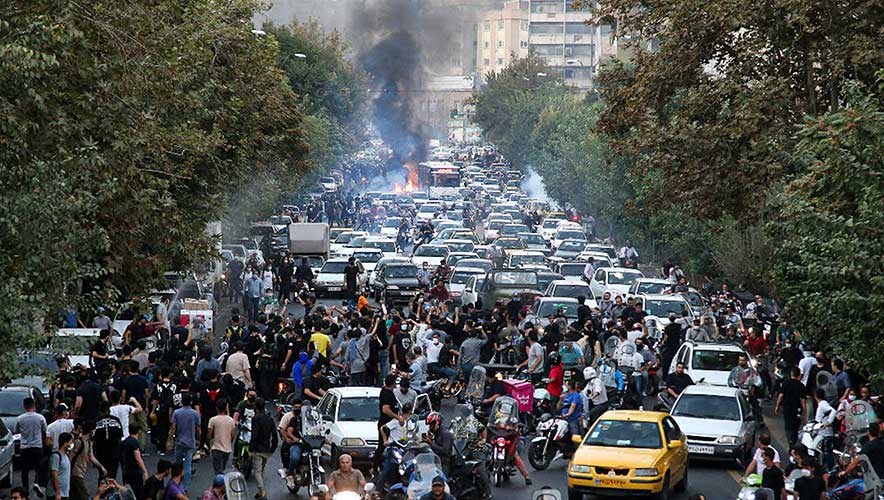Protests in Iran Spread as the Internet Goes Down and Deaths Go Up
Six days of protests throughout Iran in response to the death of 22-year-old Mahsa Amini while in the country's morality police's custody have resulted in civilian deaths and Internet outages.
Amini was arrested for violating Iran’s strictly enforced Islamic dress code—specifically for an allegedly loose headscarf or hijab—according to the Associated Press. The country’s modest dress rules, which were enacted after the 1979 Islamic Revolution, stipulate that all women above the age of puberty must wear a head covering and loose clothing.
The police said Amini suffered a stroke and a heart attack while in custody and was transferred to a hospital, where she was announced dead on 16 September. Her family has insisted that Amini was in good health, however, contrary to police claiming that she had pre-existing conditions. Her funeral was held on Saturday.
Amini's death triggered protests and defiance from many Iranians who “have come to see Amini’s death as part of the Islamic Republic’s heavy-handed policing of dissent and the morality police’s increasingly violent treatment of young women,” the AP reported.
The protests were initially concentrated in the northwestern regions, spreading during the past six days to at least 50 cities and towns throughout Iran, according to Reuters.
Some protesters have taken up the chant, “Death to the dictator” or “Death to the supreme leader,” focusing frustrations on Iran’s Supreme Leader Ayatollah Ali Khamenei. Videos and other reports of the demonstrations in several cities have included moments where women have torn off their hijabs or cut off their own hair, while elsewhere protesters have violently clashed with police or Revolutionary Guard volunteers, the Basij.
Women of Iran-Saghez removed their headscarves in protest against the murder of Mahsa Amini 22 Yr old woman by hijab police and chanting:
— Masih Alinejad 🏳️ (@AlinejadMasih) September 17, 2022
death to dictator!
Removing hijab is a punishable crime in Iran. We call on women and men around the world to show solidarity. #مهسا_امینی pic.twitter.com/ActEYqOr1Q
Masih Alinejad, an author, journalist, and activist based in the United States and mentioned in previous Security Management coverage, has run several viral campaigns against Iran’s hijab laws, including #mystealthyprotest and she is considered an “instrumental force behind the current unrest,” according to BBC News.
“At least seven protesters had been killed as of Wednesday, according to human rights groups,” The New York Times reported. “Protesters have been calling for an end to the Islamic Republic.”
In response to the protests, Iranian President Ebrahim Raisi’s government deployed security services while restricting Internet and cell phone services.
“Significant Internet outages were also reported across the country, with one of the biggest mobile phone operators disrupted, leaving millions of Iranians offline,” Aljazeera reported. The country specifically curbed access to social media sites, including Instagram and WhatsApp, which are both owned by Meta. Instagram is the only major social media platform that the government usually permits to operate within the country.
The outages are the most significant the country has seen since November 2019, when the government triggered an Internet outage to help combat protests in response to rising gasoline prices. During these protests, 1,500 people were killed, Reuters reported.
“Without Internet access, it is harder for people to post videos on social media to generate support for their cause or obtain reliable reports on what is happening,” Aljazeera added.
Raisi spoke to the United Nations General Assembly on Wednesday, accusing the United States of oppression, while portraying himself as a champion for Iranian’s rights. However, his speech was absent of any mention of the current protests, according to The Washington Post.
